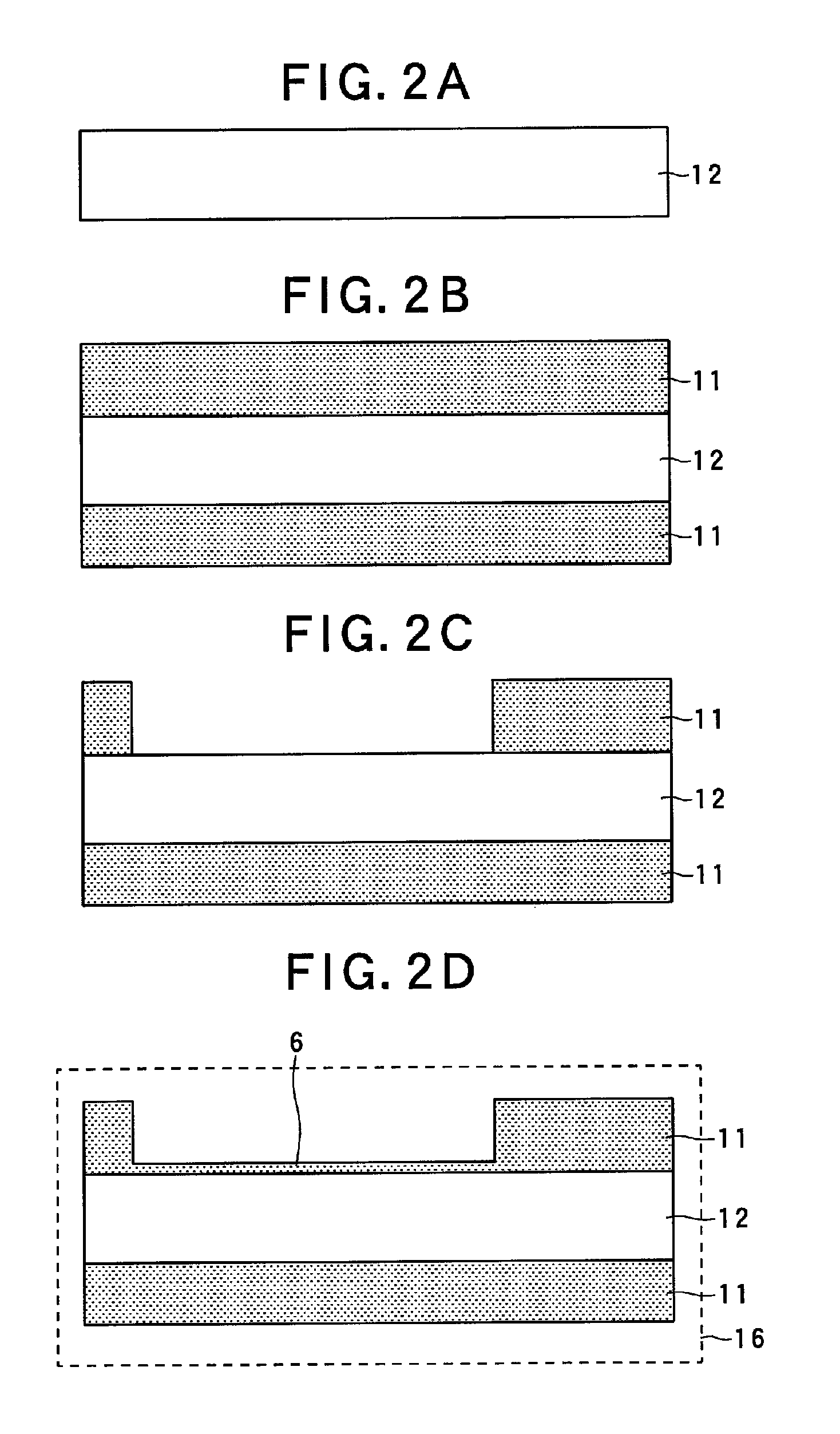Electromechanical transducer and manufacturing method therefor
a technology of electromechanical transducers and manufacturing methods, applied in the direction of electrical transducers, electrostatic generators/motors, mechanical vibration separation, etc., can solve the problems of difficult to put a circuit operating with such a high voltage to practical use, unfavorable influences on human bodies,
- Summary
- Abstract
- Description
- Claims
- Application Information
AI Technical Summary
Benefits of technology
Problems solved by technology
Method used
Image
Examples
embodiment 1
[0047]Now, reference will be made to a capacitive micromachined ultrasonic transducer (CMUT) according to a first embodiment of the present invention.
[0048]FIG. 1A and FIG. 1B are views illustrating a basic construction of a capacitive micromachined ultrasonic transducer (CMUT) in the first embodiment of the present invention. FIG. 1A is a conceptual cross sectional view of the capacitive micromachined ultrasonic transducer (CMUT), and FIG. 1B is a conceptual plan view of the capacitive micromachined ultrasonic transducer (CMUT).
[0049]In FIG. 1A and FIG. 1B, 1 designates an upper electrode which is a first electrode, 2 a vibration membrane support member, 3 a vibration membrane, 4 a substrate, 5 protrusions, 6 an insulation film, 7 an outer peripheral portion of the vibration membrane, 8 a lower electrode which is a second electrode, 9 a contact region (fusion bonded region), and 10 a cavity.
[0050]The CMUT of this embodiment includes, as shown in FIG. 1A, the vibration membrane 3 pr...
embodiment 2
[0099]Hereinafter, reference will be made to a capacitive micromachined ultrasonic transducer (CMUT) in a second embodiment of the present invention.
[0100]FIG. 3 is a view illustrating the basic construction of the capacitive micromachined ultrasonic transducer (CMUT) in the second embodiment. Also, in FIG. 4, there is shown a conceptual plan view of this capacitive micromachined ultrasonic transducer (CMUT).
[0101]In the CMUT of this second embodiment, the difference thereof with respect to the CMUT in the first embodiment of the present invention as shown in FIG. 1A and FIG. 1B is that protrusions 5 are formed on an upper portion of a vibration membrane 3 so as to be distributed in a substantially ring-shaped manner, and that a lower electrode 8 is embedded or incorporated in an underlayer substrate. Because a basically different construction is only the above-mentioned construction, those components of this second embodiment which correspond to those of the construction of the CMU...
embodiment 3
[0122]Reference will be made to a capacitive micromachined ultrasonic transducer (CMUT) according to a third embodiment of the present invention. FIG. 6 is a conceptual cross sectional view illustrating a basic construction of the capacitive micromachined ultrasonic transducer (CMUT) in the third embodiment of the present invention. In FIG. 6, 1 designates an upper electrode which is a first electrode, 2 a vibration membrane support member, 3 a vibration membrane, 4 a substrate, 6 an insulation film, 8 a lower electrode which is a second electrode, and 10 a cavity which is a gap.
[0123]The CMUT of this embodiment includes, as shown in FIG. 6, the vibration membrane 3 provided with the upper electrode 1, the substrate 4 provided with the lower electrode 8, and the vibration membrane support member 2 that serves to support the vibration membrane so as to form the gap 10 between the vibration membrane and the substrate with these electrodes being arranged in opposition to each other. He...
PUM
| Property | Measurement | Unit |
|---|---|---|
| height | aaaaa | aaaaa |
| DC voltage | aaaaa | aaaaa |
| DC voltage | aaaaa | aaaaa |
Abstract
Description
Claims
Application Information
 Login to View More
Login to View More - R&D
- Intellectual Property
- Life Sciences
- Materials
- Tech Scout
- Unparalleled Data Quality
- Higher Quality Content
- 60% Fewer Hallucinations
Browse by: Latest US Patents, China's latest patents, Technical Efficacy Thesaurus, Application Domain, Technology Topic, Popular Technical Reports.
© 2025 PatSnap. All rights reserved.Legal|Privacy policy|Modern Slavery Act Transparency Statement|Sitemap|About US| Contact US: help@patsnap.com



